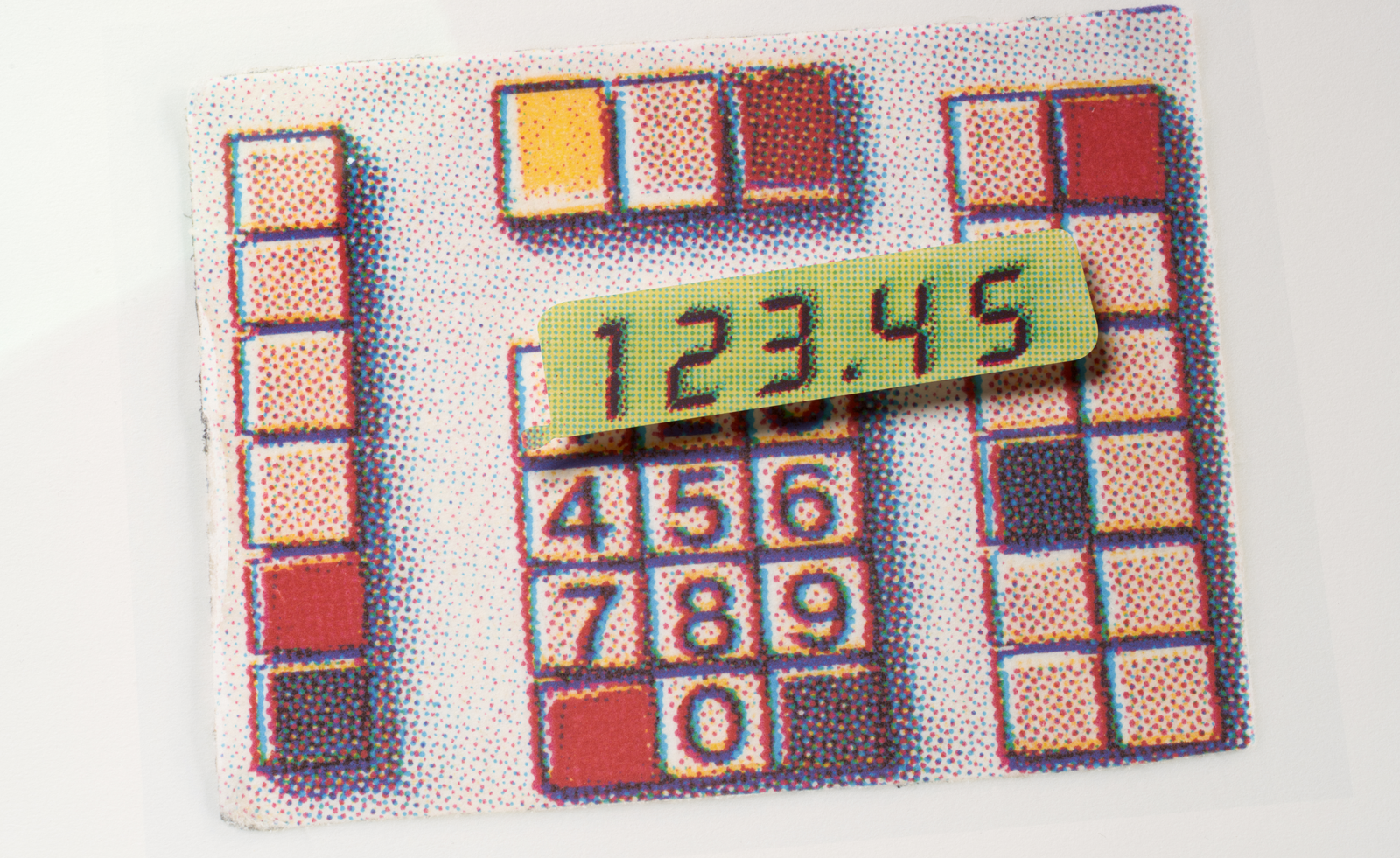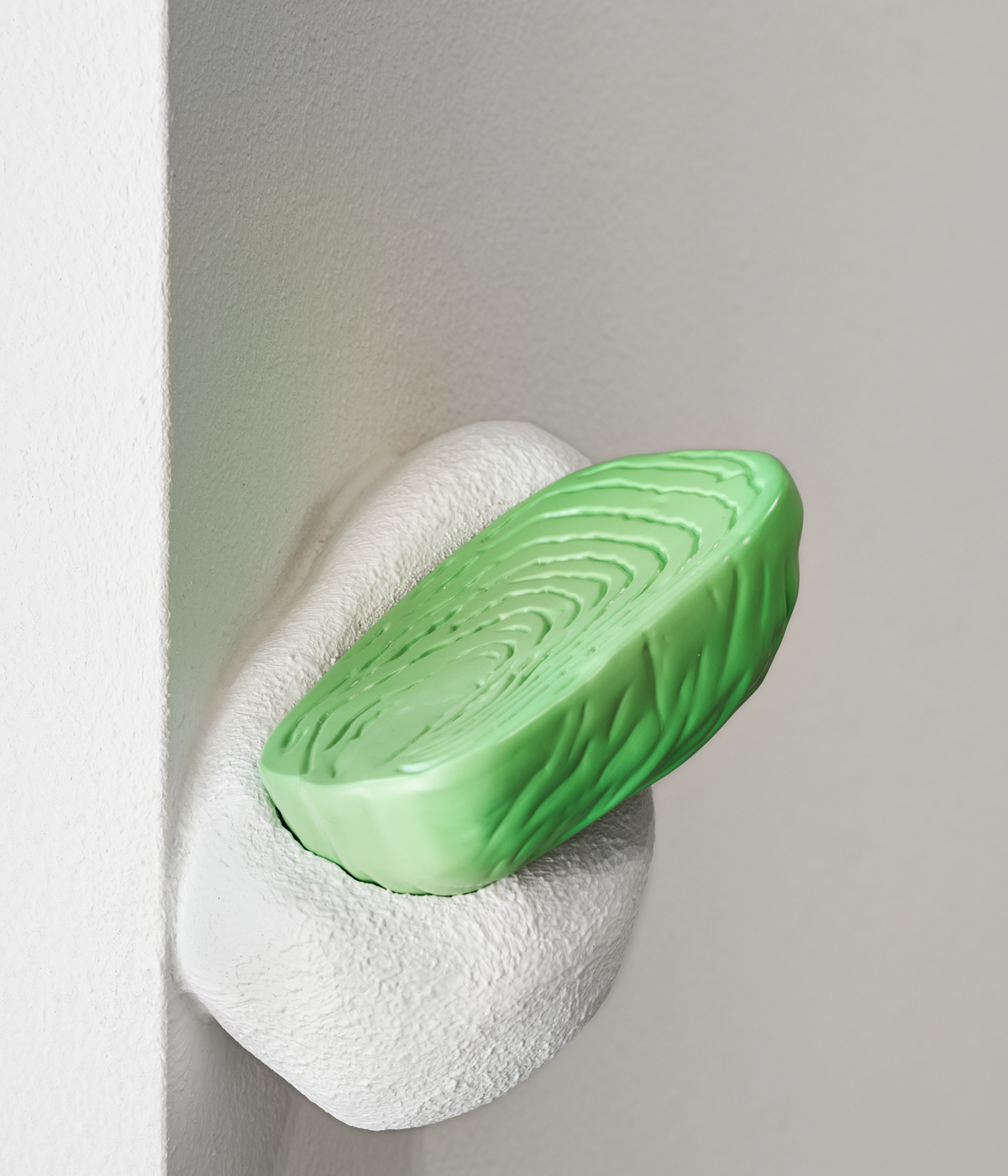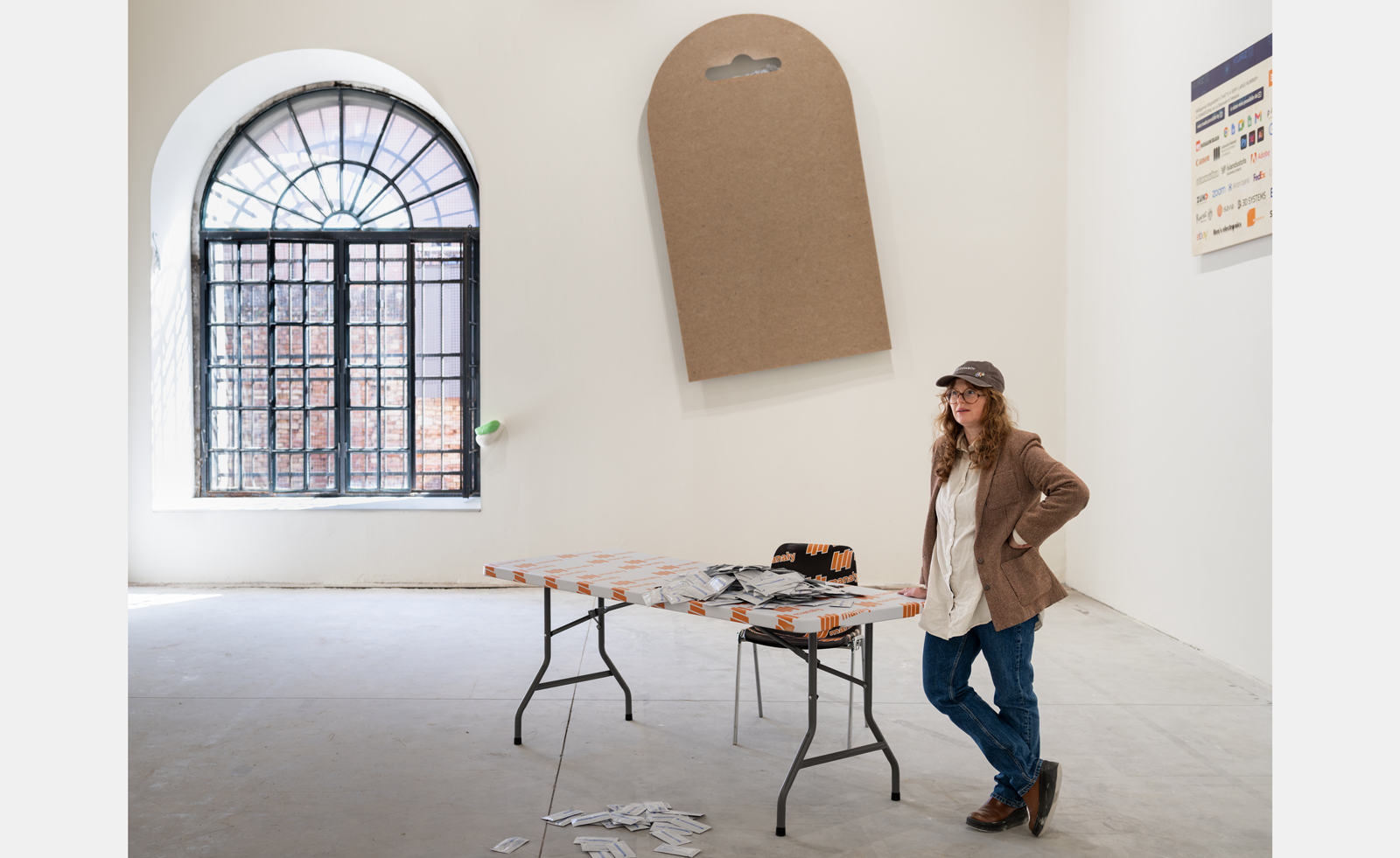
Icelandic artist Hildigunnur Birgisdóttir is drawn to detail. In her hands, a concern with the bigger picture is translated into a fascination with minutiae: the small, throwaway accessories of consumerism, for example, from signs to price tags and packing materials.
It is a fascination she has explored for the Icelandic Pavilion at the Venice Biennale 2024, in an exhibition titled ‘That’s a Very Large Number - A Commerzbau’, which also draws inspiration from ‘Merzbau’, German Dada artist Kurt Schwitters’ method of creating immersive collages from found materials. In works crafted from plastic toys and objects, and an installation made from a recycled floor panel from the Venice Architecture Biennale 2023, Birgisdóttir uncovers capitalism in all its forms. Here, she reveals the process behind her work.
Hildigunnur Birgisdottir at the Venice Biennale 2024

Wallpaper*: Your work is an interesting juxtaposition of innocent, childlike symbols and technical process. What has drawn you to such symbols as a means to express your thoughts on commercialisation?
Hildigunnur Birgisdottir: Everything human-made is of interest to me; I am trying to make sense of the world we humans have built. Sometimes, my only conclusion is to see the beauty in it. I enjoy when my findings bring me joy and humour, which you can also find in my work. So, I deep dive into these technical processes via factories and manufacturers that already exist, to go through the body of commercialism, while the symbols and logos are something more external – they represent the exterior of the system. We are all brought up as avid readers of these symbols, and that fascinates me. That we have developed a cognitive brain for millennia resulting in excellent logo reading abilities! Quelle surprise!
With the mass-produced children’s toys I represent in the exhibition, I found them to be telling of our human existence – it is a mini world we make for our children to learn to exist in this world. It’s simplified so that they can better understand and practice thriving in it. We have cash registers, dentist offices, car mechanics and all sorts of products, even nature has been reproduced in plastic for children to play with. This I find fascinating and I believe we can learn a lot about ourselves and the global system of commerce through the things we produce for children and also how we produce them.

W*: How have you translated a history of rethinking found objects, demonstrated by those including Kurt Schwitters, into the materials you have chosen to work with here?
HB: The force of repurposing is strong with me. Everything human-made is my preferred subject and interests me. I often find truth and beauty in the things that we produce millions of copies of – objects that do not exist for themselves, but rather serve as the presenters or holders for the items that are actually for sale. These objects are then tossed away after purchase, such as hangers for clothing in stores, plastic hooks to secure a product in its wrapping, etc.
I am, of course, building on the premise that nothing is excluded from being material for an artwork. This was a fundamental game changer. The fact that one could take a mass-produced item (a news clipping) and recontextualise it was a brilliant idea and perhaps made artists better equipped to reflect on the fast-changing world around them.
The subtitle of my exhibition, ‘A Commerzbau’, was inspired by my memory of being taught in school that this nonsensical word ‘Merz’, which Schwitters used for all his collages and then later ‘Merzbau’ for his installations, actually comprises the latter part of the word ‘Kommerz’ in German. Kurt had simply cut up that word and used ‘Merz’ in one of his works and decided that this would be the title of this type of art. After I had been working on my exhibition, it dawned on me that I had made an installation of found objects, a ‘Merzbau’ of sorts, made from the debris of commerce. Thus, I could say I reintroduce the ‘com’ to the ‘merz’ resulting in a ‘commerzbau’.
W*: Holograms, playing with our perception, can offer multiple interpretations. Why were you keen to work with them here?
HB: The holograms came from a wrapping I acquired that fascinated me. The wrapping was colourful and packed with information. (I believe it was from a light bulb: 40W / eco-friendly / 100 per cent guarantee/ 78,000 hours…) Each bit of information seemed to be competing for attention. On top, there was a holographic pattern that made the whole thing decorative. When I looked closely at the hologram, I saw that it was the logo of the company repeated like a pattern. This was the most decorated piece of paper I had seen for ages, and yet it was purely information, without any real decorative elements. Then I started looking into the hologram business and the fact that it is used in the marketing world to show that something is authentic, to increase value or to make something official and harder to copy (money and passports) fascinated me even more!

W*: You mention your experience, while growing up, of capitalism appearing so suddenly. How else had your heritage really defined your work for this piece?
HB: The way one’s heritage really makes a person and informs their belief-systems must be fundamental in my way of thinking.
I guess the fact that we [Iceland] are a small nation with a somewhat blown-up ego makes it seem reasonable to a person that they actually might have something to say, if that makes sense (we all might be suffering from an Island mentality). The ‘art scene’, as we know it elsewhere in the world, is also fairly young in Iceland, which maybe frees me from some of the burdens of art history. But since we are the nation of ‘The Sagas’, the written word is above all. I think that might have resulted in the strong roots of conceptual art in Iceland; you can definitely see that influence in my work.
‘That’s a Very Large Number - A Commerzbau’, by Hildigunnur Birgisdóttir at the 60th International Art Exhibition – La Biennale di Venezia 2024, until 24 November 2024







